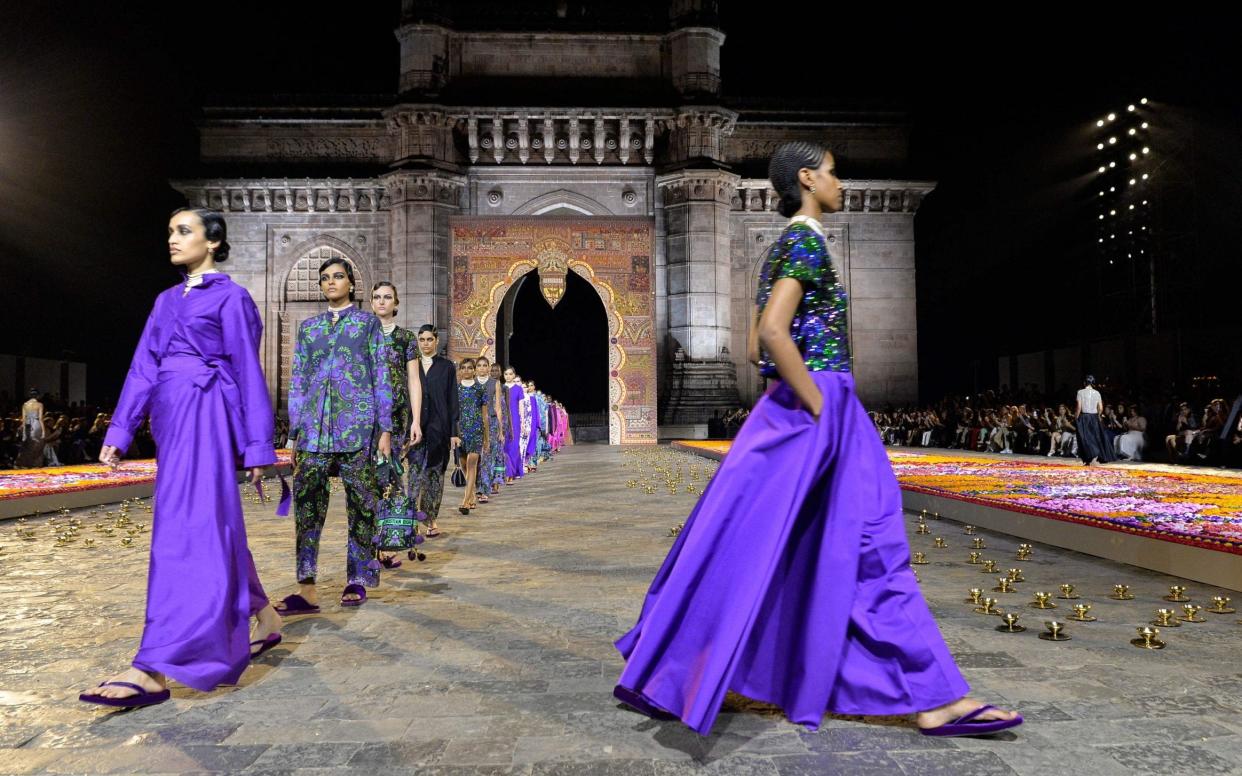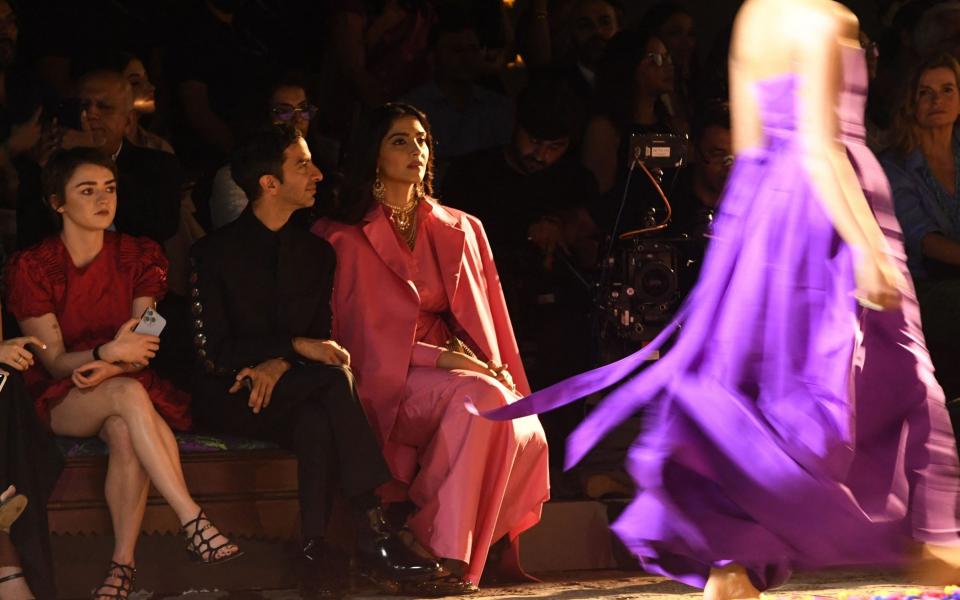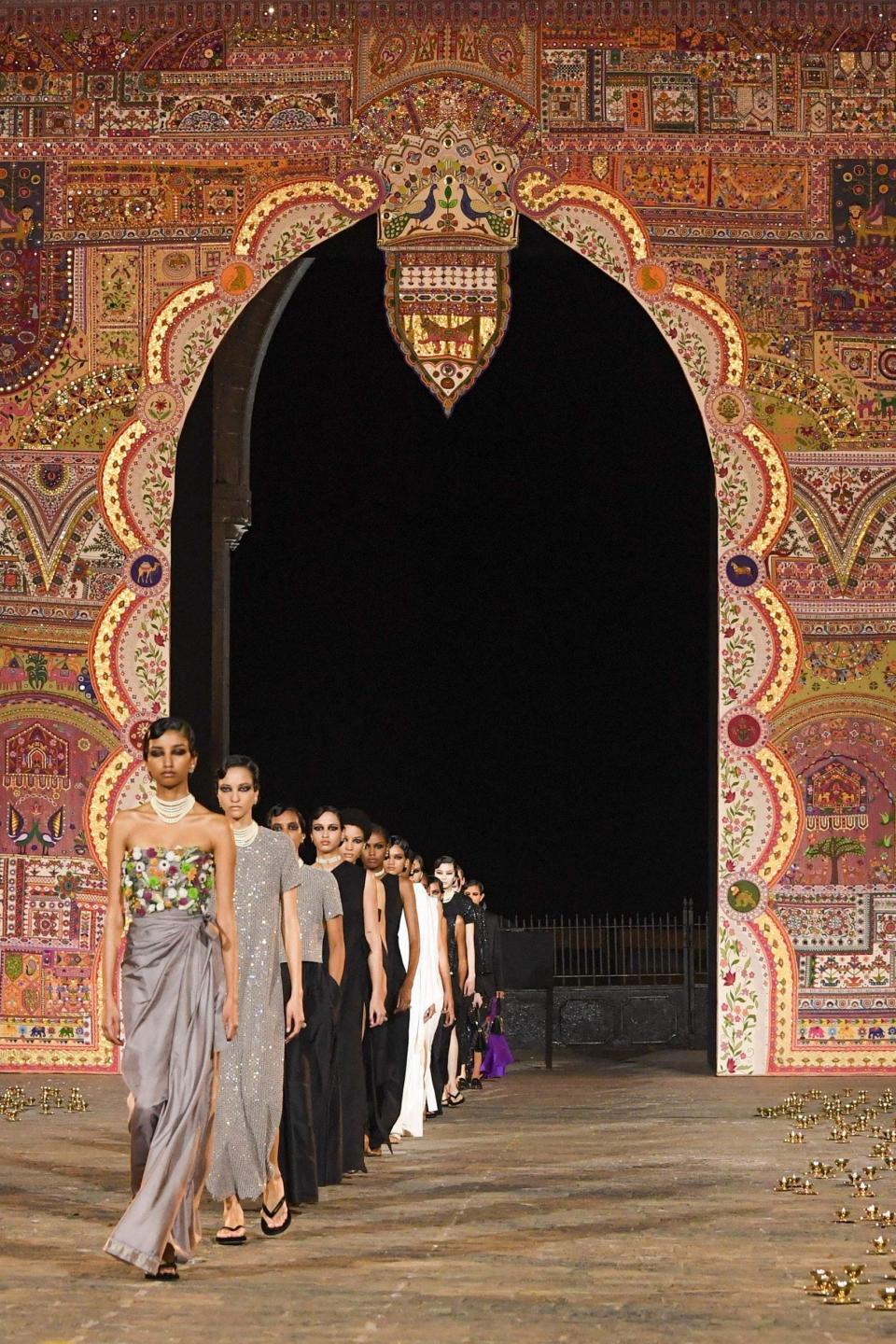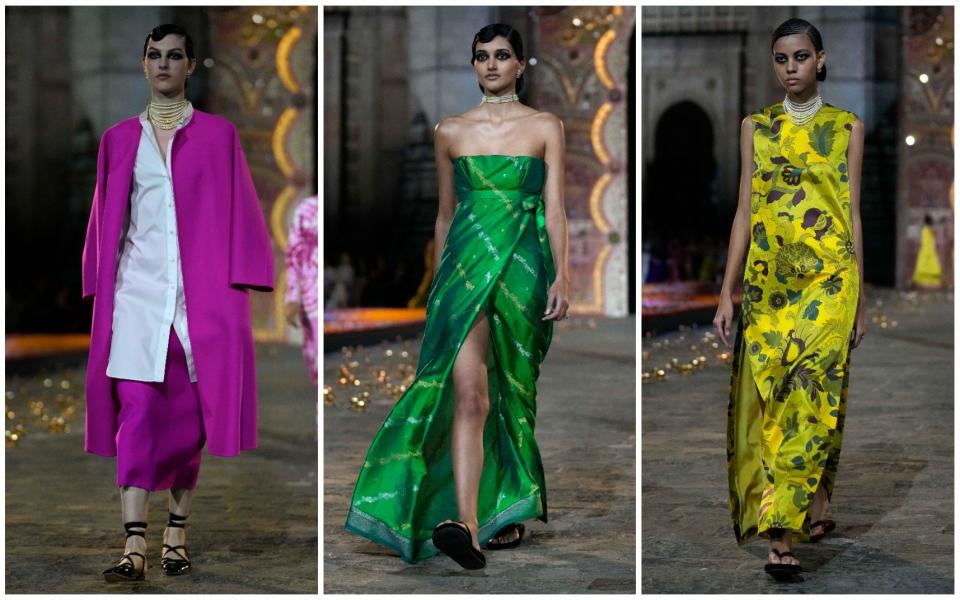‘Dior is a brand made for Indian women, who have curves and love femininity’

This wasn’t Dior’s first ever show in India (although that’s the line coming from much of the coverage here). Marc Bohan, who was then Dior’s creative director, staged one here in 1962.
Even so, “it’s a huge deal for us,” one Indian member of the audience told me. “Not just because of the Bollywood and Western stars who’ve flown in [the cause of the screams, especially the beautiful Sonam Kapoor, a huge star in India who lives in London ], but because it’s important for us to see that the world values our craftsmanship. Also, Dior is a brand made for Indian women, who have curves and love femininity. Androgyny is not our thing.”
It’s more than 20 years since a Goldman Sachs economist coined the term BRIC for the cluster of emerging economies he predicted would shortly take over the world. Since then, Brazil, Russia and China have experienced, to put it mildly, varying peaks and troughs.
Meanwhile, India, the third in the group, now has around 166 billionaires – the third highest ranking after the US and China. You will understand why the super luxury brands are in a hurry to plant flags in Mumbai, where surprisingly few of them have boutiques of any significance.
That may change after Dior’s epic fashion show on Thursday evening, in the shadow of one of the country’s most famous colonial landmarks: Mumbai’s Gateway of India, an Indo-Islamic arch that was finally completed in 1924 to commemorate a visit from George V more than a decade earlier.

For Maria Grazia Chiuri, Dior’s Italian creative director, India has always been about much more than commerce. Ever since she worked at Fendi in the 1990s, she has understood the value of India’s artisans and integrated their work into her collections, including during her time at Valentino. In 2017, shortly after she joined Dior, the French house began funding Chanakya, a school that teaches the fading skills of embroidery, lace making, appliqué and block printing to youngsters from disadvantaged backgrounds (mainly women who’d otherwise be jobless).
Most luxury brands who use Indian workshops traditionally play the fact down. But in an era that increasingly talks about ethics and “giving back to communities”, Dior is discovering that its school in the heart of Mumbai – and its associated atelier of around 1,000 graduate artisans – isn’t just a source of exquisite appliqués and fine crochet but a priceless jewel in its corporate social responsibility crown.

I visited the school the morning of the show and it wasn’t what I expected. Light, modern and peaceful, save for the intermittent clacking of a loom, its mood is one of Zen-like concentration as seamstresses (and some seamsters) contemplate the seemingly endless task of embarking on a handmade lace dress that will take 4,000 hours to complete, printing bolts of fabric by hand, using non-toxic vegetable dyes, or creating free-form tapestries for Lady Dior handbags that turn them into little meadows of yellow flowers.

Watching them work gives a rare insight into just how much work can go into the world’s most expensive clothes and accessories (and also the tapestries that decorated the Gateway to India for the show, and are often featured as backdrops on Dior’s catwalks in Paris, designed by some of the world’s leading female artists).

More than that, says Chiuri, “is the relationship you develop with each artisan. You get to know who is the best with cashmere or sari silks, what kind of stitching that one does and what their individual taste is like, so that you can pair them off with the right project. It’s totally collaborative.”

This collection, available in the stores now, is vast in its range, from sleeveless “vests” and mini tunics composed of such dense gold embroideries on mesh backing that the embroidery becomes the main composition, to the plainest (and most beautiful) of draped column dresses in white or black silk jersey.
Chiuri, a designer who normally loves navy, khaki and taupe, had opened the spice cupboard. Saffron, lime and mango-coloured silk was whipped up into weightless-looking strapless dresses, wrap skirts and unstructured opera coats, mostly worn with flat shoes. Loose, collarless silk shirts fluttered over slim midiskirts. This was a steeped-in-India glamour, done the effortless, Parisian way.

Pink, the colour Diana Vreeland called the navy-blue of India, abounded. There was a glimpse of Madras checks. But in truth, the triumph of this collection is that it avoided any sense of fancy dress. A largely Indian cast of models threaded their way through pools of marigolds and roses in front of an audience of 900 guests, including some of the most elegant socialites I’ve seen grace a front row in recent times (India’s finest), plus Irish actress Jessie Buckley and Game of Thrones’ Maisie Williams. Many more watched from the tall buildings overlooking the Gateway.

The best illustration of this international symbiosis? A midnight-coloured Bar Jacket (a descendant of the original horsehair padded, peplum jacket that was part of Christian Dior’s radical New Look in 1947). Classic, oh-so French, but this time with a Nehru collar.


